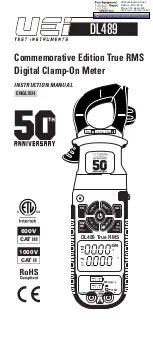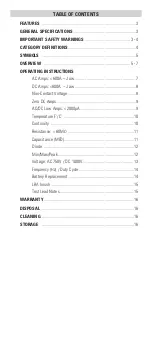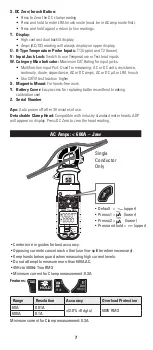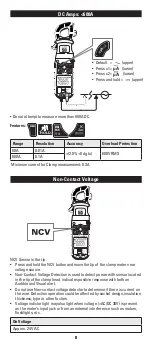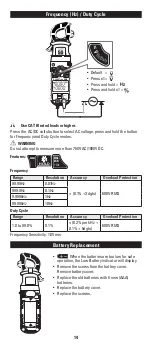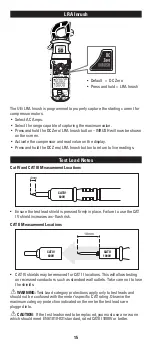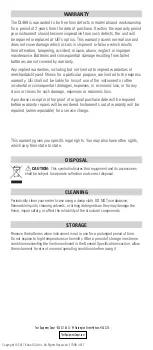
4
IMPORTANT SAFETY WARNINGS (CONT.)
• Use caution when working with voltages above 60V DC or 25V AC RMS.
Such voltages pose shock hazards.
• To avoid false readings that can lead to electrical shock, replace
batteries if a low battery indicator appears.
• Unless measuring voltage or current, shut off and lockout power before
measuring resistance or capacitance.
• Always adhere to national and local safety codes. Use proper personal
protective equipment (PPE) to prevent shock and arc blast injury where
hazardous live conductors are exposed.
• Always turn off power to a circuit or assembly under test before cutting,
unsoldering or breaking the current path. Even small amounts of current
can be dangerous.
• Always disconnect the live test lead before disconnecting the common
test lead from the circuit.
• In the event of electrical shock, ALWAYS bring the victim to the
emergency room for evaluation, regardless of victim’s apparent recovery.
Electrical shock can cause unstable heart rhythms that may need
medical attention.
• If any of the following occurs during testing, turn off the power source to
the circuit being tested: arcing, flame, smoke, extreme heat, smell of
burning materials or discoloration melting of components.
WARNING
Higher voltages and currents require greater awareness of physical safety
hazards. Before connecting the test leads, turn off power to the circuit under
test, set meter to the desired function and range, connect the test leads to
the meter first, then connect to the circuit under test. Reapply power. If an
erroneous reading is observed, disconnect power immediately and recheck all
settings and connections.
WARNING
This meter is designed for trade professionals who are familiar with the
hazards of their trade. Observe all recommended safety procedures that
include proper lock-out utilization and use of personal protective equipment
that includes safety glasses, gloves and flame resistant clothing.
Measurement
Category
Short-Curcuit
(typical) kA
a
Location in the
building installation
II
< 10
Circuits connected to mains socket
outlets and similar points in the MAINS
installation
III
< 50
Mains distributions parts of the building
IV
> 50
Source of the mains installation in the
building
CATEGORY DEFINITIONS

